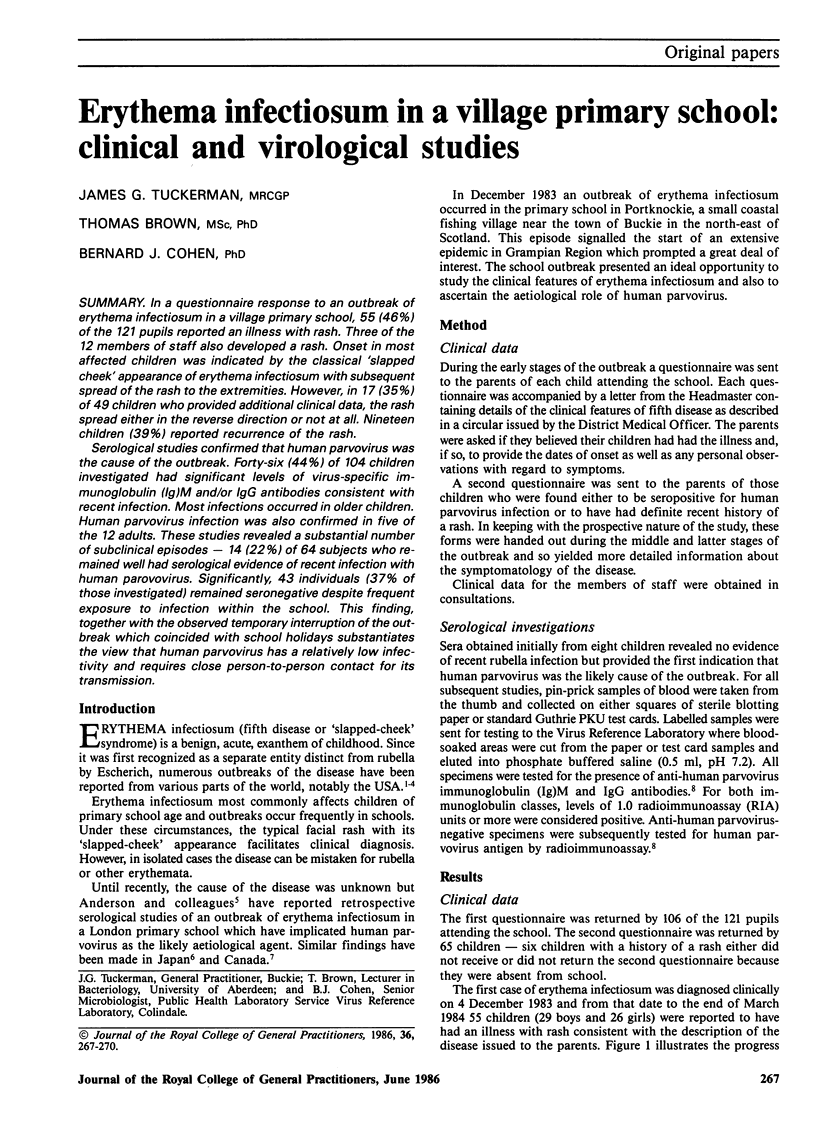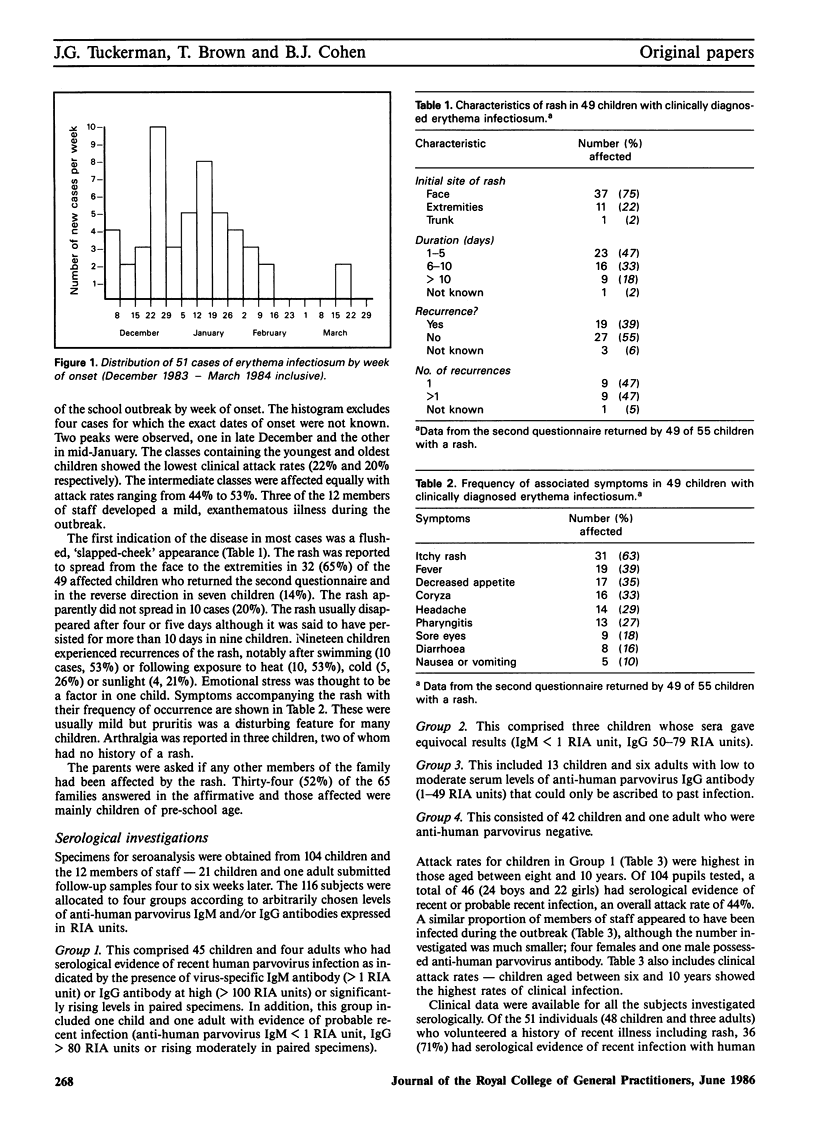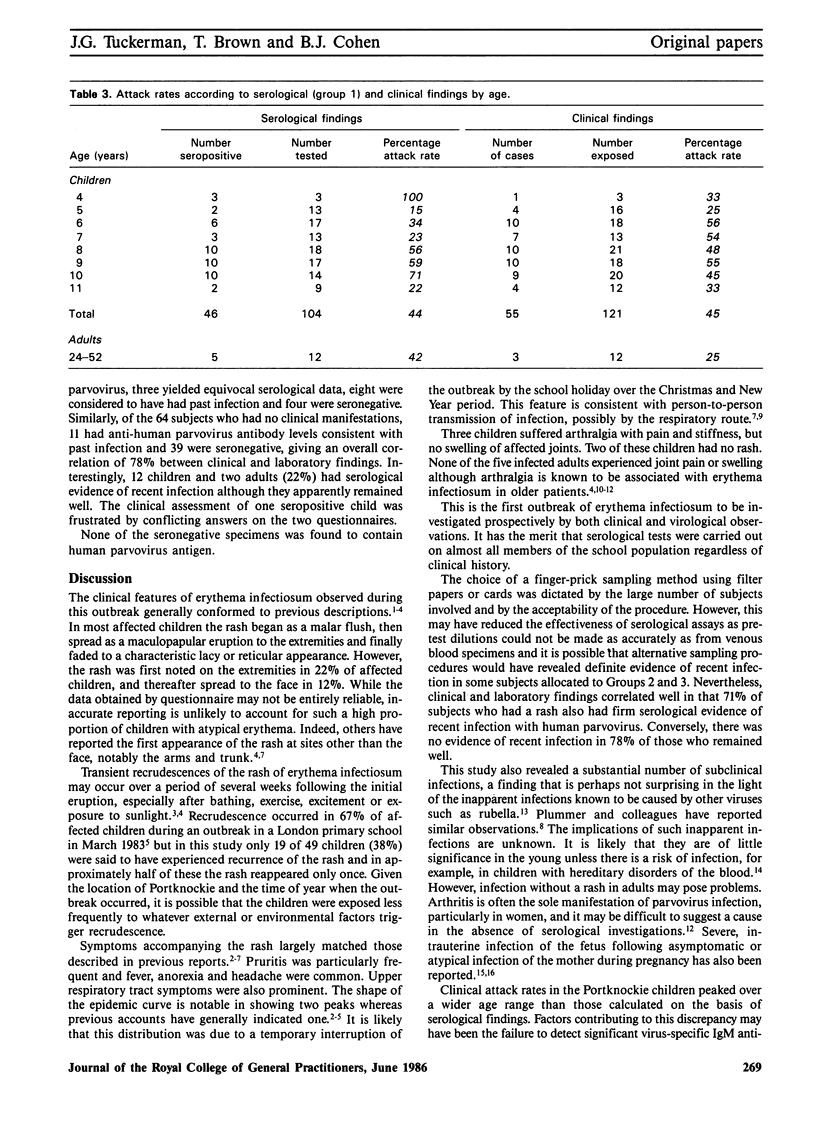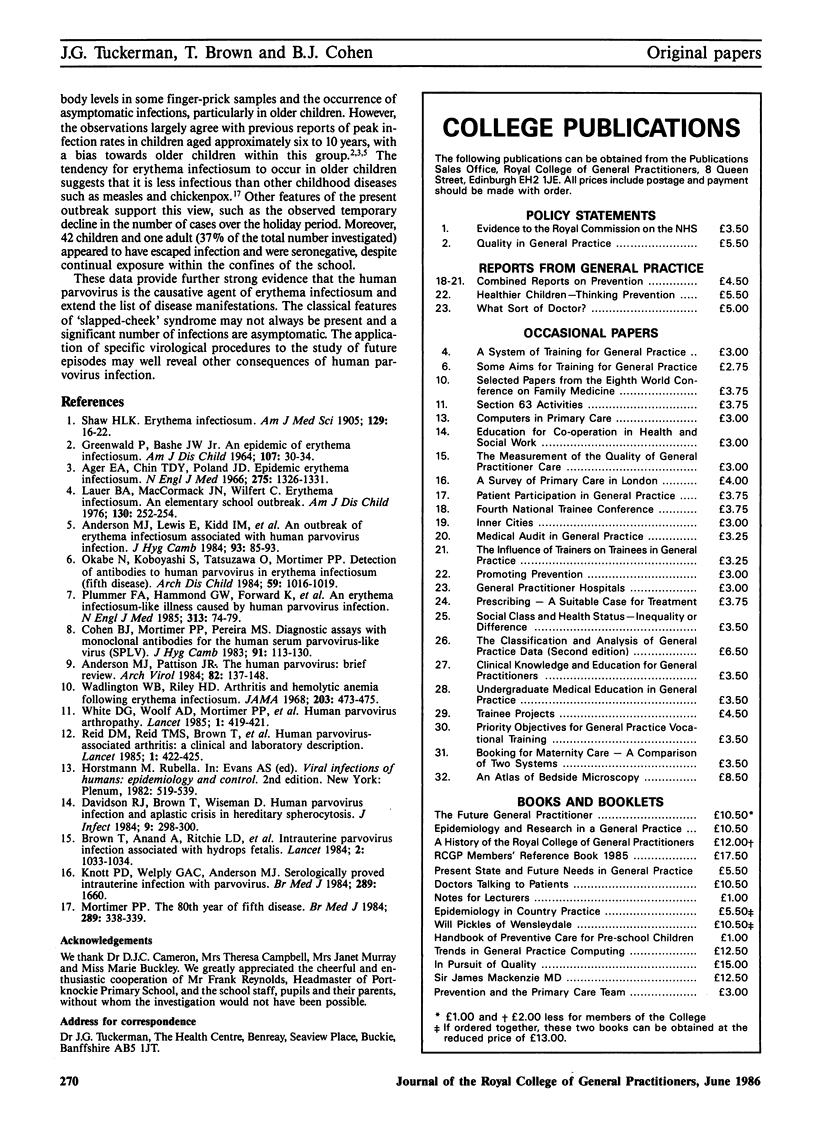Abstract
In a questionnaire response to an outbreak of erythema infectiosum in a village primary school, 55 (46%) of the 121 pupils reported an illness with rash. Three of the 12 members of staff also developed a rash. Onset in most affected children was indicated by the classical `slapped cheek' appearance of erythema infectiosum with subsequent spread of the rash to the extremities. However, in 17 (35%) of 49 children who provided additional clinical data, the rash spread either in the reverse direction or not at all. Nineteen children (39%) reported recurrence of the rash.
Serological studies confirmed that human parvovirus was the cause of the outbreak. Forty-six (44%) of 104 children investigated had significant levels of virus-specific immunoglobulin (lg)M and/or lgG antibodies consistent with recent infection. Most infections occurred in older children. Human parvovirus infection was also confirmed in five of the 12 adults. These studies revealed a substantial number of subclinical episodes — 14 (22%) of 64 subjects who remained well had serological evidence of recent infection with human parovovirus. Significantly, 43 individuals (37% of those investigated) remained seronegative despite frequent exposure to infection within the school. This finding, together with the observed temporary interruption of the outbreak which coincided with school holidays substantiates the view that human parvovirus has a relatively low infectivity and requires close person-to-person contact for its transmission.
Full text
PDF



Selected References
These references are in PubMed. This may not be the complete list of references from this article.
- Ager E. A., Chin T. D., Poland J. D. Epidemic erythema infectiosum. N Engl J Med. 1966 Dec 15;275(24):1326–1331. doi: 10.1056/NEJM196612152752402. [DOI] [PubMed] [Google Scholar]
- Anderson M. J., Lewis E., Kidd I. M., Hall S. M., Cohen B. J. An outbreak of erythema infectiosum associated with human parvovirus infection. J Hyg (Lond) 1984 Aug;93(1):85–93. doi: 10.1017/s0022172400060964. [DOI] [PMC free article] [PubMed] [Google Scholar]
- Anderson M. J., Pattison J. R. The human parvovirus. Brief review. Arch Virol. 1984;82(3-4):137–148. doi: 10.1007/BF01311158. [DOI] [PubMed] [Google Scholar]
- Brown T., Anand A., Ritchie L. D., Clewley J. P., Reid T. M. Intrauterine parvovirus infection associated with hydrops fetalis. Lancet. 1984 Nov 3;2(8410):1033–1034. doi: 10.1016/s0140-6736(84)91126-7. [DOI] [PubMed] [Google Scholar]
- Cohen B. J., Mortimer P. P., Pereira M. S. Diagnostic assays with monoclonal antibodies for the human serum parvovirus-like virus (SPLV). J Hyg (Lond) 1983 Aug;91(1):113–130. doi: 10.1017/s0022172400060095. [DOI] [PMC free article] [PubMed] [Google Scholar]
- Davidson R. J., Brown T., Wiseman D. Human parvovirus infection and aplastic crisis in hereditary spherocytosis. J Infect. 1984 Nov;9(3):298–300. doi: 10.1016/s0163-4453(84)90750-3. [DOI] [PubMed] [Google Scholar]
- GREENWALD P., BASHE W. J., Jr AN EPIDEMIC OF ERYTHEMA INFECTIOSUM. Am J Dis Child. 1964 Jan;107:30–34. doi: 10.1001/archpedi.1964.02080060032005. [DOI] [PubMed] [Google Scholar]
- Knott P. D., Welply G. A., Anderson M. J. Serologically proved intrauterine infection with parvovirus. Br Med J (Clin Res Ed) 1984 Dec 15;289(6459):1660–1660. doi: 10.1136/bmj.289.6459.1660. [DOI] [PMC free article] [PubMed] [Google Scholar]
- Lauer B. A., MacCormack J. N., Wilfert C. Erythema infectiosum. An elementary school outbreak. Am J Dis Child. 1976 Mar;130(3):252–254. doi: 10.1001/archpedi.1976.02120040030006. [DOI] [PubMed] [Google Scholar]
- Mortimer P. P. The 80th year of fifth disease. Br Med J (Clin Res Ed) 1984 Aug 11;289(6441):338–339. doi: 10.1136/bmj.289.6441.338. [DOI] [PMC free article] [PubMed] [Google Scholar]
- Okabe N., Koboyashi S., Tatsuzawa O., Mortimer P. P. Detection of antibodies to human parvovirus in erythema infectiosum (fifth disease). Arch Dis Child. 1984 Nov;59(11):1016–1019. doi: 10.1136/adc.59.11.1016. [DOI] [PMC free article] [PubMed] [Google Scholar]
- Plummer F. A., Hammond G. W., Forward K., Sekla L., Thompson L. M., Jones S. E., Kidd I. M., Anderson M. J. An erythema infectiosum-like illness caused by human parvovirus infection. N Engl J Med. 1985 Jul 11;313(2):74–79. doi: 10.1056/NEJM198507113130203. [DOI] [PubMed] [Google Scholar]
- Reid D. M., Reid T. M., Brown T., Rennie J. A., Eastmond C. J. Human parvovirus-associated arthritis: a clinical and laboratory description. Lancet. 1985 Feb 23;1(8426):422–425. doi: 10.1016/s0140-6736(85)91146-8. [DOI] [PubMed] [Google Scholar]
- Wadlington W. B., Riley H. D., Jr Arthritis and hemolytic anemia following erythema infectiosum. JAMA. 1968 Feb 12;203(7):473–475. [PubMed] [Google Scholar]
- White D. G., Woolf A. D., Mortimer P. P., Cohen B. J., Blake D. R., Bacon P. A. Human parvovirus arthropathy. Lancet. 1985 Feb 23;1(8426):419–421. doi: 10.1016/s0140-6736(85)91145-6. [DOI] [PubMed] [Google Scholar]


